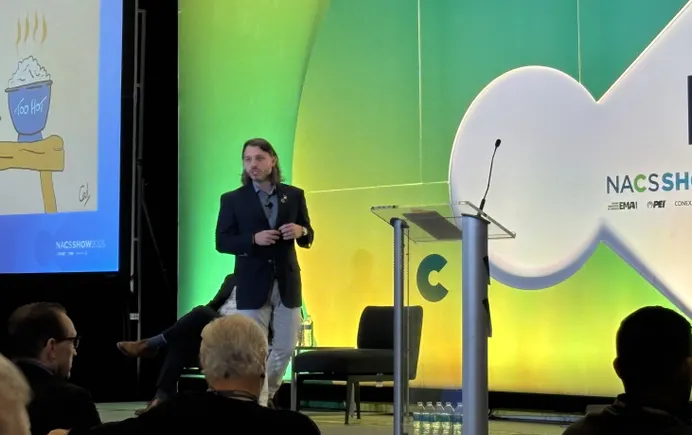In today’s fiercely competitive job market, job seekers frequently encounter alarming claims about Applicant Tracking Systems (ATS). The oft-repeated statistic—“75% of resumes are rejected by ATS before a human ever sees them”—appears across social media, career blogs, and videos, yet it rarely cites any credible source. To separate fact from fiction, Enhancv conducted in-depth interviews with 25 U.S. recruiters spanning tech, healthcare, finance, and more. Their answers paint a clearer picture: ATS tools organize applications; they do not automatically eliminate them. Human recruiters, overwhelmed by sheer volume, make the final decisions. This article unpacks the study’s findings with direct quotes and data to guide job seekers toward smarter application strategies.
What Is an Applicant Tracking System, and How Does It Really Work?
An Applicant Tracking System is software that helps employers manage the hiring pipeline. Platforms like Workday, iCIMS, Greenhouse, Bullhorn, and BambooHR store resumes, track candidate status, and enable keyword searches or filters. Far from the “digital gatekeeper” portrayed online, most ATS simply hold applications until a recruiter reviews them.
Enhancv defined critical terms to ensure clarity:
- Automatic rejection – The system labels a candidate “rejected” without human input.
- AI/content auto-rejection – Rejection triggered by rules such as match-score thresholds or missing skills.
- Knockout questions – Binary eligibility checks (e.g., work authorization, certifications, location).
Every recruiter (100%) uses knockouts for compliance, but only 8% (2 out of 25) configure content-based auto-rejection—and even then, only for strict job criteria like “match less than 75%” or “fewer than 7 of 10 required skills.” The other 92% reject manually or via knockouts alone. As one recruitment manager explained, “We have to go in and do it ourselves—the system doesn’t disposition people automatically.”
Where Does the “75% Rejection” Myth Originate?
Sixty-eight percent of recruiters first encountered the myth from anxious job seekers on LinkedIn or TikTok. Twenty percent traced it to career coaches or resume services recycling outdated advice, while 12% blamed unsourced headlines in mainstream media. Roughly one in ten recruiters had never heard the claim until the interview.
The narrative persists because it offers a convenient scapegoat for silence after applying. Yet recruiters insist the real issue is not software but scale. “It’s a false narrative that takes advantage of people,” one Los Angeles recruiter lamented. “It’s a shame they resort to scare tactics.”
AI Match Scores: Sorting Aids, Not Final Judges
Forty-four percent of the ATS platforms include AI “fit scores” to rank resumes. However, 36% of recruiters use these scores only as a guide and always verify manually; another 8% treat them as prioritization tools; and 56% ignore the feature entirely. Recruiters described scores as “hit and miss” or insisted, “I still look at the resume to ensure accuracy before engaging.”
The True Barrier: Overwhelming Application Volume
When resumes disappear without feedback, job seekers blame algorithms. Recruiters point to sheer numbers:
- Entry-level roles average 400–600 applicants.
- Customer service or remote positions often exceed 1,000 in the first week.
- Tech and engineering postings can hit 2,000+ rapidly.
- Senior or niche roles stay below 200 but receive deeper scrutiny.
One software development recruiter anticipated “400, 500 resumes” for a data analyst role within a week. Another reported 2,000 applications for engineering positions. With only minutes—or seconds—per resume, recruiters build shortlists quickly and often pause postings to cope. “First-come, first-served,” admitted a VP of HR, “because I don’t have time to review thousands.”
Knockout questions efficiently handle black-and-white requirements. For technical roles, a single visa-sponsorship question eliminates about 30% of applicants. Education minimums (e.g., “Do you have a bachelor’s degree?”) serve the same purpose. These are compliance filters, not formatting traps.
Does Applying Early Improve Your Odds?
Timing influences visibility due to human bandwidth, not automation. Fifty-two percent of recruiters review applications in arrival order, so early submissions rise to the top. Thirty-six percent process in batches, making timing less critical. The remainder say it varies by role and workload.
A Fortune 500 recruiter advised, “The earlier you apply, the better your chances of being among the resumes actually looked at.” Many pause postings after 300–500 strong applications, even if the listing remains live. Late applicants often arrive after interviews have begun.
What Recruiters Really Want in a Resume
Recruiters overwhelmingly prioritize clarity and relevance over “ATS hacks.” Ninety-two percent value a clear, skimmable structure; 88% seek relevant experience and skills; 76% appreciate natural keyword use without stuffing; 72% prefer short bullet points over dense paragraphs; 68% favor simple, consistent formatting; 64% expect one to two pages maximum; and 52% look for achievements backed by measurable results. These preferences reflect the need to scan dozens—or hundreds—of resumes quickly. Generic, mass-applied documents or obvious AI-generated patterns (e.g., repetitive bolded themes) raise red flags. Overly graphic designs, seven-page resumes, or non-chronological job order also frustrate reviewers.
Why the Myth Endures and How to Move Forward
Layoffs, ghosting, and opaque processes breed distrust. Immediate knockout rejections or AI misreads feel algorithmic, fueling suspicion. Social media amplifies fear, and some services profit by selling “ATS-proof” templates. Yet as one recruiter empathizes: “I understand why candidates think this way,” one said. “AI helps us, but it leaves a bad taste when things go wrong.”
The kernel of truth—some systems can auto-reject based on strict criteria—gets exaggerated. In reality, 92% of rejections are manual or eligibility-driven. Focus instead on:
- First-impression power – Lead with role-relevant skills and quantified achievements in a strong summary.
- Light tailoring – Mirror job-description language naturally.
- Strategic timing – Apply within 48–72 hours of posting.
- Value-added outreach – Use LinkedIn connections (32% recommendation) or thoughtful cover letters (16% endorsement).
Conclusion: Equip Yourself with Reality, Not Rumors
Enhancv’s September–October 2025 study of 25 recruiters across industries and company sizes (100 to 50,000+ employees) dismantles the ATS rejection myth. Only 8% enable content auto-rejection; 92% rely on human review guided by knockouts and optional scores. The true hurdle is volume, not software. Craft concise, tailored resumes that respect recruiters’ time, apply early, and network proactively. Understanding actual hiring dynamics transforms frustration into effective strategy—and moves you from the pile to the shortlist.





















